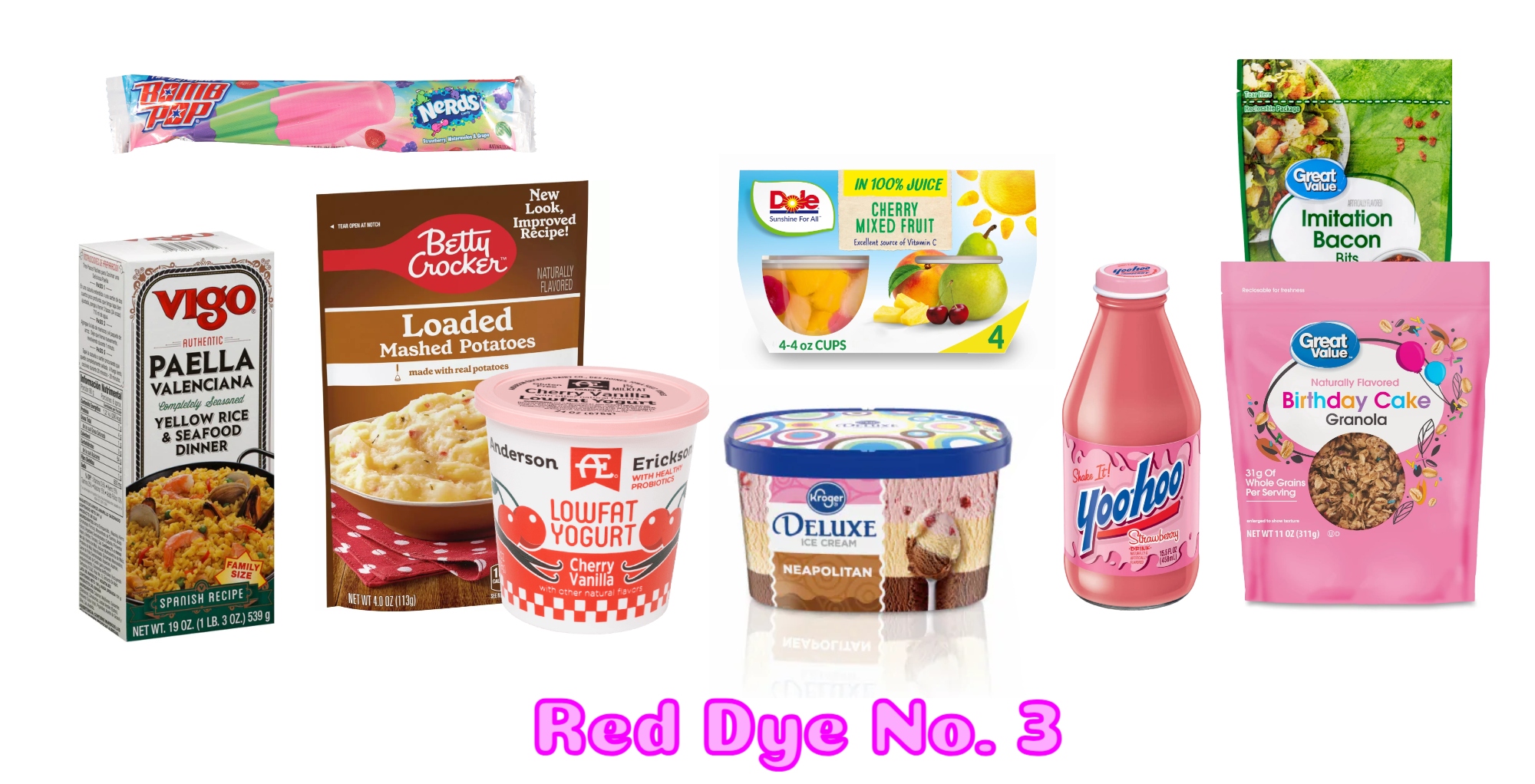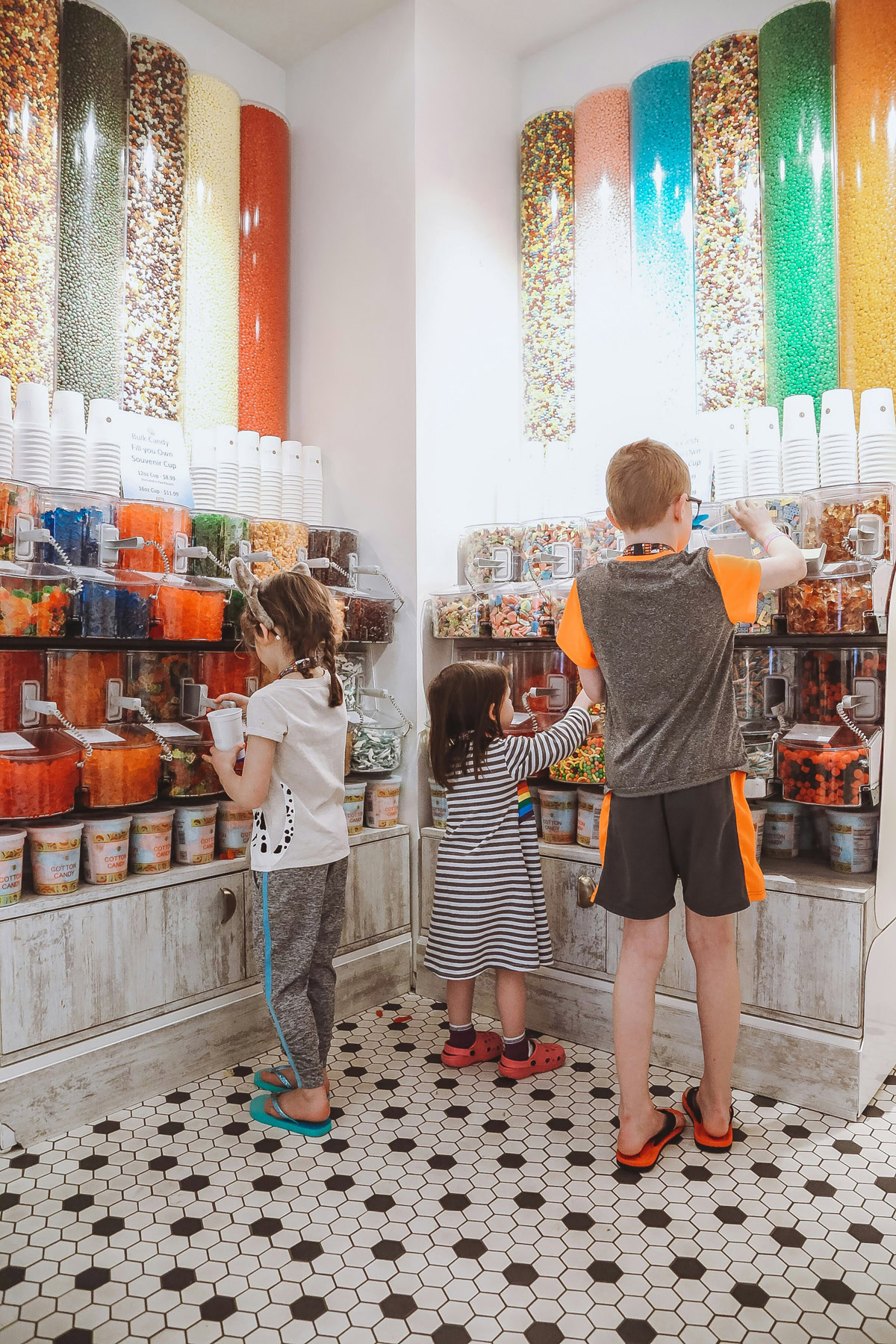
In September 2023, the California Legislature passed the California Food Safety Act. The CFSA banned the sale of food and drinks containing red dye No. 3, as well as three other harmful chemicals that are frequently found in processed foods: potassium bromate, brominated vegetable oil and propylparaben. They also banned red No. 40, yellow No. 5, yellow No. 6, blue No. 1, blue No. 2 and green No. 3 from public school foods and drinks by 2027. New York and Illinois are also in the process of doing the same.
If you aren’t familiar with red dye No. 3, it’s a synthetic food coloring that’s made from petroleum and used in nearly 3,000 different food products, including fruit cups, gummies, frostings, and candies like Skittles and Peeps. It’s controversial because studies have found that the dye can cause cancer and trigger behavioral issues like irritability and hyperactivity. The US banned it from cosmetics in 1990. Use in food is already banned in Europe, but my fellow American know how it goes whenever we try to enact any positive change here. Money makes the rules, and there’s always resistance for resistance’s sake. Well, it looks like progress may finally be coming. The FDA’s deputy commissioner for human foods said in a Senate hearing last week that the administration is open to finally banning red dye No. 3.
There’s a petition to get rid of it: At the Senate Health, Education, Labor and Pensions Committee meeting Thursday, Jim Jones, the FDA’s deputy commissioner for human foods, said, “With Red 3, we have a petition in front of us to revoke the authorization board, and we’re hopeful that in the next few weeks we’ll be acting on that petition.”
Bad for rats, fine for humans? Some of the same dyes that are used in food are also used in pharmaceutical drugs, but the dyes are approved separately for each use. In 1990, the FDA banned Red No. 3, also known as erythrosine, from cosmetics and topical drugs under the Delaney Clause, because the chemical was shown to be carcinogenic at high doses in tests on lab rats. “We don’t believe there is a risk to humans,” FDA’s Jones said.
Europe’s all over it: Some of the dyes allowed in food in the U.S. are either banned or require a warning label in other countries. The European Union requires a warning label on products that contain three artificial food dyes approved in the U.S.:
Yellow No. 5, also known as tartrazine.
Red No. 40, also called E129 or Allura Red AC.
Yellow No. 6, called sunset yellow or E110.The required label warns that the additive “may have an adverse effect on activity and attention in children.”
It’s apparently a ‘badge of honor’ to ignore warnings in the US: “There is something called the precautionary principle, which is basically the thought that it’s better to be safe than sorry,” said Jerold Mande, an adjunct professor of nutrition at the Harvard T.H. Chan School of Public Health, who is also a former FDA senior adviser and former deputy undersecretary for food safety at the Agriculture Department. “The U.S. wears it as a badge of honor that we don’t adhere to it.” Other countries do not want to take a risk, even if data on potential harms is not conclusive, he said.
They only exist to make food look pretty: “These food dyes only serve one function in food, to make them look pretty so you and I want to buy it, it’s a marketing tool,” said Thomas Galligan, principal scientist for food additives and supplements at the Center for Science in the Public Interest.
The FDA says: An FDA advisory committee conducted a review of the possible link between artificial food dyes and hyperactivity in 2011 and determined that “a causal relationship between exposure to color additives and hyperactivity in children in the general population has not been established.” The agency revisited the issue in 2019 and maintained its stance. Regulatory agencies and scientists alike have reached conflicting conclusions about what research has found.
What science? “The most concerning is that we do so little science to understand the harms,” Mande said, referring to research funded by the U.S. government. In a 2012 review of studies on artificial food dyes and ADHD symptoms, which included the research presented to the FDA in 2011, researchers concluded that artificial food colorings “are not a main cause of ADHD, but they may contribute significantly to some cases, and in some cases may additively push a youngster over the diagnostic threshold.”
Science says: More than a decade later, officials completed the California Office of Environmental Health Hazard Assessment, a 2021 review of all the available research that studied whether artificial food dyes may have an effect on human health. The conclusion: “Consumption of synthetic food dyes can result in hyperactivity and other neurobehavioral problems in some children, and that children vary in their sensitivity to synthetic food dyes.”
“The evidence now shows pretty conclusively that when some kids eat these, they will experience nervous system effects that look like ADHD,” Galligan said. “There are 27 human clinical trials that show these dyes do in fact harm children’s behavior.”
No further research: The government spends very little money researching synthetic food additives once they are approved, Mande said. Less than 5% of the National Institutes of Health’s research budget goes to studying issues related to nutrition. Acute harms, such as poisoning, are well understood among FDA-approved products, Mande said, “but the effort to understand the effects in the long term or subtle things like behavior, we don’t study that.”
How the US differs from Europe: “The biggest distinction between the U.S. and Europe is that they have been doing post-market review of chemicals for over 20 years,” he said. “The FDA, although we have authorization to do post-market review, there’s no statutory mandate.”
Why’d you have to go and make things so complicated: Mande said. “These food dyes are things that a lot of countries already don’t allow. It’s one thing to produce different foods for different countries, but to do it for different states is a nonstarter,” he said.
As for that last part about it being “tricky” to make food with dyes in some states and not others, I’m pretty sure that’s short-hand for “it’s too expensive to do that.” If that’s the case, it does not surprise me that banning a harmful food additive could come down to it being more cost-effective to do so, but so be it. The lobbying industry is killing us all. It’s insane how unhealthy American food is in comparison to what our European counterparts are serving and it’s criminal that they don’t bother to really research things that we put into our body once they’ve been approved, even if there is evidence that it’s harmful. FFS, we decided that it’s harmful to put red dye No. 3 on our faces but just fine to put into our bodies even when it’s been linked to carcinogens. It’s about time that we seriously re-evaluated these dyes and banned them. They have no business being in our foods.
Photos credit: Alejandro Peralta on Pexels, April Walker on Unsplash













I’m a dietitian and this would be just fine with me. There’s a lot of shaming that people aim at the purchasers of processed food and that shaming should be aimed at companies that are adding things just for marketing and don’t care how it impacts health. People buy what they can afford and I’m not here to shame them for that.
I’m old enough to remember when Red Dye #5 was banned. I worked for a Betty Crocker company that made sugar roses that you could place on your cake to make it look like you were a professional decorator. I can’t remember what the substitute was for Red Dye #5, but it turned the roses brown, and they no longer sold well. I’m OK with them banning all these dyes.
I really don’t get why industry lobbyists still get away with promoting to keep unhealthy dyes in food when natural alternatives like red beet, spinach or turmeric exist.
That’s not to say we here in Europe are better with controlling what goes into our food though.
What I’d like to see would be some sort of scientific council that bans additives to food, cosmetics and drugs based on criteria that are agreed upon worldwide, with the power to levy substantial fines.
I agree 100%! Also how will all of this play out if RFK jr is in charge? He’s pushing raw milk and eliminating vaccines and fluoride in drinking water. The FDA is about to become a big ass mess!
Artificial food dyes also case allergic reactions leading to anaphylaxis. We carry an epipen everywhere.
After my college-aged son spilled red fruit punch on a light colored carpet yesterday, I’m all for this too 🙃